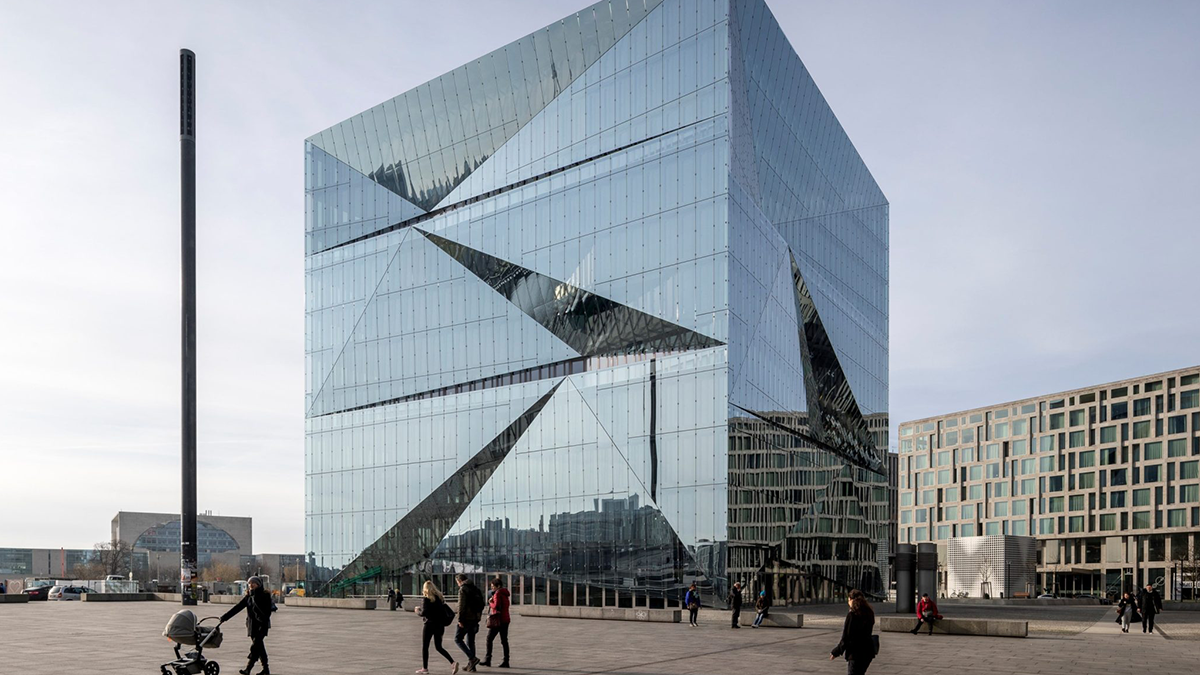Nextome and Smart Buildings innovation: the CUBE case in Berlin and all the challenges to come
By Piero Boccadoro – R&D Software Engineer
Nextome is a technology company that deals with information technology and is therefore very interested in the whole tech world in general. Starting from technological scouting on new devices, up to the definition of new architectures and protocols, the company is engaged on several levels in the research and development of innovative and cutting-edge solutions.
Operating in the world of IoT and digital twins, Nextome is in contact with various realities of the industrial world, such as for example in the automotive field but also, more generally, factories and production plants. In this scenario we normally deal with process optimization, statistical and qualitative analysis of the products and the problems they may have. To do this, the process necessarily requires the creation of a digital interface that abstracts physical reality and creates, in effect, a virtual double.
We normally also apply this same type of work to the case of buildings for civil use in the field of smart retail, for example, but also to offices. Our cities today are increasingly populated by examples of smart buildings, that is, buildings that try to reinvent themselves and innovate their way of serving their purpose, such as offering personalized advertising services based on the user or knowing the habits of use of a common space in the office and optimize temperatures and lighting.
But a smart building today cannot simply be a building in which there are automations. It would be really simplistic to think that inside a modern building it is enough to modulate the temperature and reduce energy waste to a minimum with the lighting system to be able to define it as "smart". In fact, especially in some cities, there are some really interesting examples of smart buildings. One of these is the "Cube", in Berlin, a building whose purpose is to experiment with frontier technologies and solutions in the field of smart buildings.
The experiment amazes on several levels. First of all, from an architectural point of view, because it is beautiful; It looks like a perfect cube of just under 20,000 square metres, completely covered in triangular-shaped windows. The external double glass facade provides considerable daylight, natural ventilation and protection from solar radiation accumulations, while on the outside the surface reflects the surrounding environment creating an important visual spectacle.
The interior includes a series of rooms and spaces, for office use and beyond, which can be visited by the public, created with human well-being at the center of the design. The leased companies have around 17,000 square meters of usable space at their disposal in the CUBE Berlin, which can be flexibly expanded and adapted to the needs of the employees. The possibilities of the smart office building are also evident in the operation of the office space. For example, users can book free workstations or rooms and control the room climate via an app. Of course, some processes also work automatically — such as access to the building or even operating the lift.

But what really makes the CUBE special is found on the inside. At its heart is the so-called “brain”, a central control unit equipped with AI. A total of approximately 3800 sensors have been installed inside the building for the intelligent control of entrances, elevators, heating, cooling and lighting of the entire building. Control takes place via a convenient user interface configured as a mobile application; the latter can also be used for internal communications between the various offices and for booking areas and meeting rooms.
In order to optimize the building's processes, the recorded user data is analyzed and evaluated, and suggestions for improvement are then derived. The systems are then optimized accordingly. In areas that are not used much, for example, the heating, ventilation, cooling or lighting systems are automatically adapted to the users or switched off when not in use, increasing energy efficiency. In addition, heat gained from solar radiation and the building itself is used to cool the fresh air, and a special solar coating on the glass façade minimizes the heating of the interior rooms in summer. According to its own information, the building even undercuts the specifications of the Energy Saving Ordinance (EnEV) by about 25 percent thanks to these technical innovations. It is also said to be able to generate around 50 percent of the total primary energy used by the building regeneratively thanks to heat recovery and the use of solar thermal energy directly in the building.
Well, what more can we say about a building like this? For Nextome, a scenario like the one just described represents the best possible playgorund. It would be wonderful if there were more buildings of this type and perhaps they were also equipped with systems and software interfaces for integration with other systems. In an environment like this, Nextome's technology that allows localization and navigation would represent a real added value for newcomers or occasional visitors, such as event speakers or guests.
It is precisely in realities like these that a company like ours wishes to enter, to test itself even more, even better, in more challenging conditions and with the participation of multiple actors who simultaneously attempt to improve the sustainability of the entire system.
References:
https://en.reset.org/the-cube-berlin-building-with-brain/
AI in Architecture - cube_design (cube-designltd.co.uk)
AI: Driving the Future of Smart Buildings | Smart Spaces
How AI in architecture is shaping the future of design, construction (autodesk.com)
4 Amazing Intelligent Buildings From Around the World (resonai.com)
Farzaneh, Hooman, et al. "Artificial intelligence evolution in smart buildings for energy efficiency" Applied Sciences 11.2 (2021): 763.
Panchalingam, Rav, and Ka C. Chan. "A state-of-the-art review on artificial intelligence for Smart Buildings" Intelligent Buildings International 13.4 (2021): 203-226.
Selvaraj, Rajalakshmi, Venu Madhav Kuthadi, and S. Baskar. "Smart building energy management and monitoring system based on artificial intelligence in smart city" Sustainable Energy Technologies and Assessments 56 (2023): 103090.
